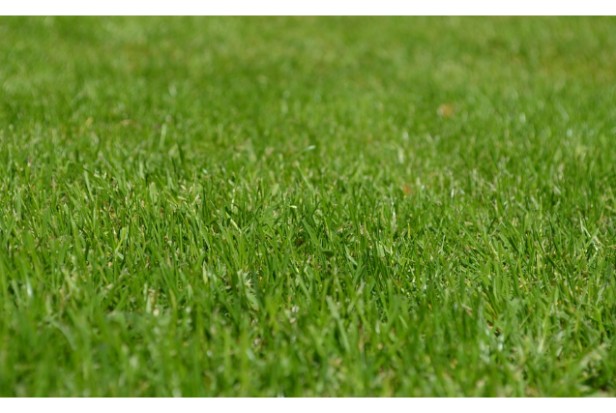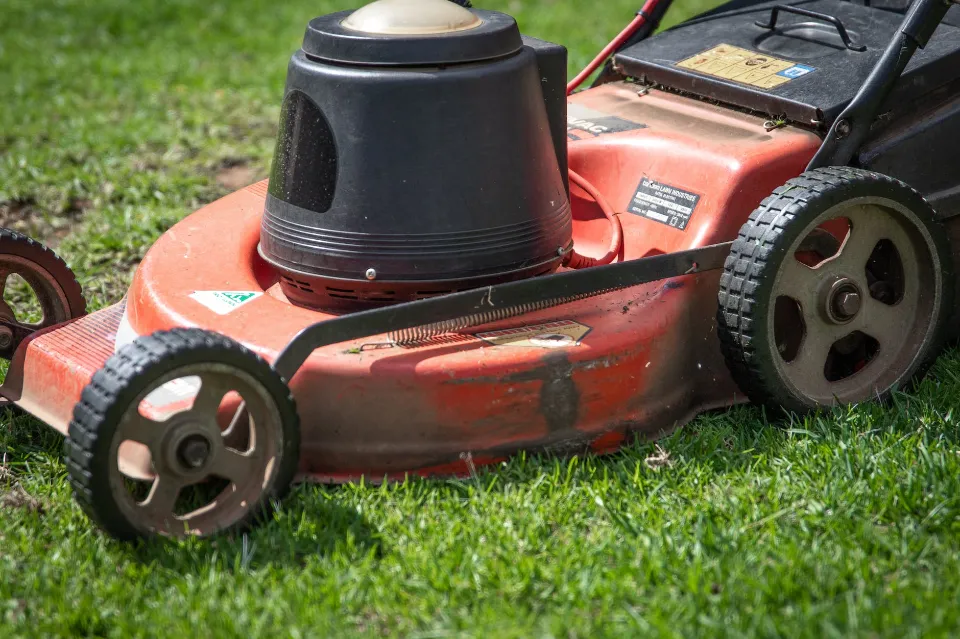We’ve covered how often can you apply sulfur to your lawn and how to apply sulfur to increase the pH of the soil in your lawn in this guide. Here’s the complete guide to using sulfur to reduce the pH of the soil for your lawn care.
Raising soil pH is much easier and less expensive than lowering it. You employ sulfur in this situation. It differs from the sulfur-containing plant nutrient, though. You can apply sulfur every three to five weeks to the lawn.
Sometimes a little assistance is needed for lush, green lawns to function at their peak. Sometimes the soil contains the nutrients that turf grasses require for healthy growth, but the grass is unable to access them. Sulfur works to release these inaccessible nutrients from the soil so that grass roots can absorb them when you apply sulfur to your lawn.
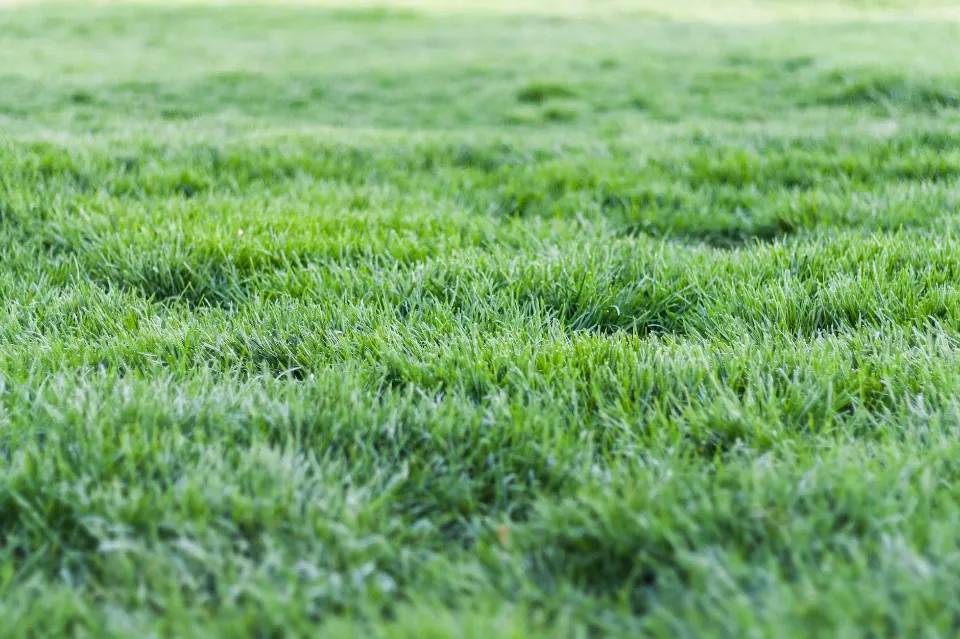
How Often Can I Apply Sulfur to My Lawn
Sulfur can be used to enhance the appearance of your lawn, but you must keep in mind that results won’t happen right away. To ensure that the sulfur slowly builds up in the soil, you will need to apply sulfur several times (every three to five weeks) throughout the year.
Too much sulfur, however, can harm your lawn’s grass to grubs in your lawn, so you should be aware of this.
Verify the pH level of your soil before applying sulfur to your lawn. The pH should be between 6.0 and 7.0. To confirm that you have a balanced pH level, you should also examine the texture of your soil. Sulfur can cause your grass to burn if your soil is overly acidic. (Read More: How to Level Your Lawn – 2023 Complete Guide)
You can tell if your lawn needs more sulfur by how it appears. It can withstand drought and cold winter temperatures if there is enough sulfur for it to grow green and densely. Moreover, it is less prone to illnesses. On the other hand, if your lawn doesn’t have enough sulfur, it will start to yellow and turn pale green.
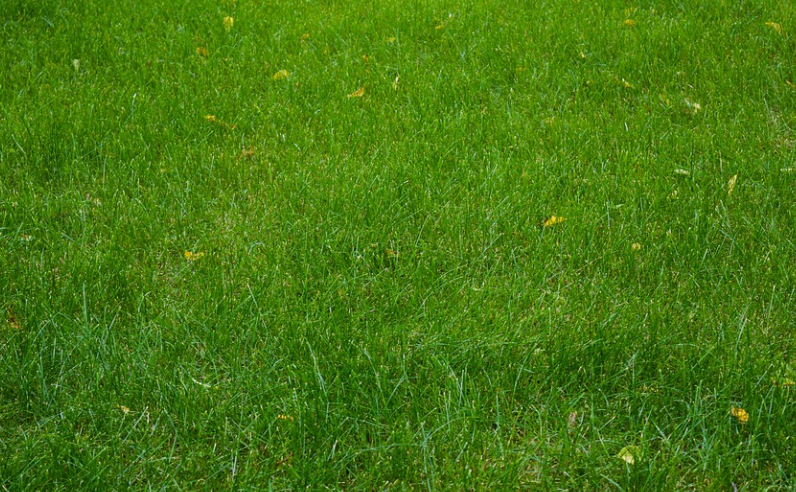
How to Apply Sulfur to Lawn
Your lawn will appear healthier and greener if you add sulfur to it. It is a soil enhancement that makes your lawn more resilient to dry spells and chilly winters.
However, you should be aware that it might take a while for sulfur to have its full impact on your lawn. Apply sulfur in smaller doses rather than one large one to prevent harm to your lawn.
You must first ascertain the pH of your soil before proceeding. A pH of 6.0 to 7.0 is typically what a lawn requires. Nutrients cannot reach the roots in an acidic or alkaline soil. By bringing down the pH level, sulphur will assist you in solving this issue.
Because the sulfur is already in a form that plant roots can absorb, it is also very economical. Sulfur will also save you money because it has a lower tendency to leach, volatilize, and de-nitrify.
Ammonium sulfate is the most widely used sulfur fertilizer. It functions to raise the nitrogen content of your turf and to lessen pH changes. Additionally, it acts as an adjuvant to herbicides, fungicides, and insecticides.

Alkaline Soils
Sulfur can be used to lessen acidity in soil if the pH is too high. As a one-time treatment or on a regular basis, it can be used on existing landscapes. Sulfur is an effective acidifier, but the dust it produces can be harmful to health.
When using this chemical, it is therefore best to put on gloves and a respirator. The pH of your soil can also be raised by adding sulfites, which lower pH more quickly than sulfur.
Other types of sulfur exist in addition to sulfur. One is extremely acidifying elemental sulfur. This means that it will benefit crops grown in alkaline soils but hurt them in acidic soils.
Sulfate is another form of sulfur that can either be acidifying or neutral in its reaction. The acidity of soil increases tenfold from pH 5.5 to pH 6.5 and one hundredfold from pH 7.5.
Sulfate (SO4) is the form of sulfur that plants typically absorb. Sulfate is easily transported to plants because it is soluble in water. The breakdown of organic matter in the soil produces sulfate as a byproduct.
Sulfate is a valuable nutrient for plants because it contains sulfur. However, a sulfur fertilization program should still be used in addition to this type of sulfur. Instead, it should be included in a fertilizer mix with other nutrients.
While it is possible to use elemental sulfur to restore acidic soils to their neutral pH, it is important to keep in mind that the process takes time. The results might not be felt for a year or longer. Sulfur dioxide also necessitates careful planning.
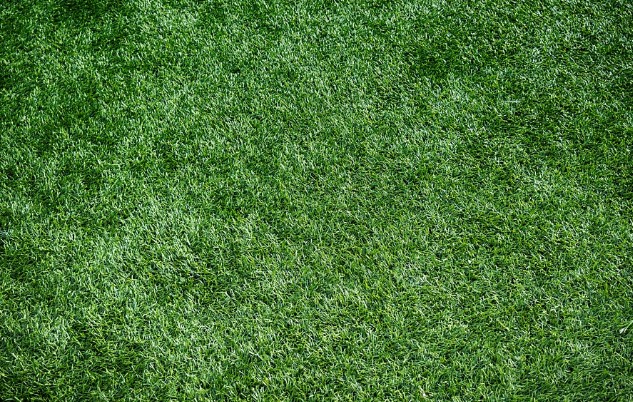
Centipede Lawns
For centipede lawns, sulfur is a common amendment. The pH of soil is stabilized by this chemical. For every thousand square feet of lawn, you should spread five pounds of elemental sulfur on it. The sulfur rate should be doubled if your soil is clay, though.
The top four inches of soil should be covered with sulfur before giving lawn a good watering. Centipede lawns grow slowly, so it could take up to six months before you notice a change.
Another crucial aspect to take into account is soil health. Healthy and free of compaction soil should be present. Low organic content and inadequate drainage are common characteristics of poor soils.
Root rot may develop as a result of these circumstances preventing air and water from penetrating the soil. Fertilizers won’t help with this, but common soil amendments can.
A nutrient that can benefit centipede lawns is ammonium sulfate. Both wettable and granular forms are offered. If the centipede lawn is sparse, wet applications should be made more frequently than twice a year.
The pH is lowered by one point by sulfur to produce its effects. However, it will take some time before you notice any noticeable changes in the pH of your centipede lawn. Additionally, keep in mind that sulfur only functions when heated, so make sure to use a good irrigation system as well.
Fertilizer is also advantageous for centipede lawns in addition to sulfur. A phosphorus-free fertilizer is the best choice for centipede lawns. This item is appropriate year-round.
It can accelerate spring growth and continue to supply nutrients all year long. Humic acid, which promotes the health of the soil, is also present.

Soil PH
It’s crucial to first think about the pH of the soil when adding sulfur to a centipede lawn. This grass prefers a soil pH of 5.5 or lower and is sensitive to high soil pH levels. Utilizing lime or sulfur fertilizers, you can raise or lower the pH of your soil.
Apply the sulfur to the top four inches of the soil and keep the area moist. The application procedure could require several weeks. After the grass begins to turn green in late spring, the first fertilization should be applied.
Centipede grass requires sulfur as a vital nutrient. In addition to assisting in the production of nitrogen-fixing nodules, which are necessary to supply the grass with nitrogen, it also aids in the production of vital proteins in plants. Additionally, it encourages the development of new roots and contributes to the overall health of the plants.
It’s critical to comprehend the functions of the bacteria and enzymes in sulfur before applying it to a centipede lawn. Dead organic matter is quickly broken down by these bacteria and enzymes and then returned to the soil.
Additionally, they create humus, the fertile top layer of soil. In contrast to the typical lawn’s one to two inches of humus, a healthy lawn typically has a six to eight inch layer.
A slow-release organic fertilizer that doesn’t need a lot of nitrogen is ideal for a centipede lawn. Many of the organic fertilizers on the market have low concentrations of these nutrients, making them a good option for centipede grass.

Centipede Lawn in the Spring
Hardy and low-maintenance centipede grass can withstand infrequent mowing, little fertilizer, and some shade. In coastal plains, it’s a grass that’s frequently used for utility. Check the pH levels of the soil before sulfur is applied to your centipede lawn.
Acidic soils with a pH of around 7.0 are preferred by the grass. Consider using sulfur sulfate or iron chelates if your soil is overly acidic. They can be sprayed on or applied directly to the lawn by mixing with water. (Read More: Best Time to Water Grass – How to Maintain A Healthy Lawn)
Apply a sulfur-based substance called elemental sulfur at a rate of five pounds per thousand square feet of soil. In clay soils, this quantity needs to be doubled. The soil must receive the sulfur application and be kept moist for the top four inches.
Sulfur improves soil health and can help centipede grass resist pests, diseases, and weeds even though it does not speed up the grass’ growth.
You can quickly and easily add sulfur to your centipede lawn. The sulfur can reduce the pH of the soil by 1.0 point annually. However, it’s crucial to avoid adding too much sulfur, as this can cause the grass’s roots to burn.
Wearing protective gear and gloves while working is therefore imperative to prevent exposure to this toxic chemical.
You should postpone aeration if a pre-emergent herbicide has been used. By using aeration, you can break up the soil barrier that keeps seeds from sprouting. In addition, weed seeds will be able to germinate in this environment, growing and dispersing. (Also Read: How to Overseed or Reseed Your Lawn – Is It Necessary)
Read More:
- What is a Brushless Lawn Mower – Is It Worth It
- Lawn Mower Won’t Stay Running – Causes & How to Fix
- Is It Legal to Mow Your Lawn at Night – What Time Can I Mow
- How to Edge a Lawn – 2023 Guide To Lawn Edging
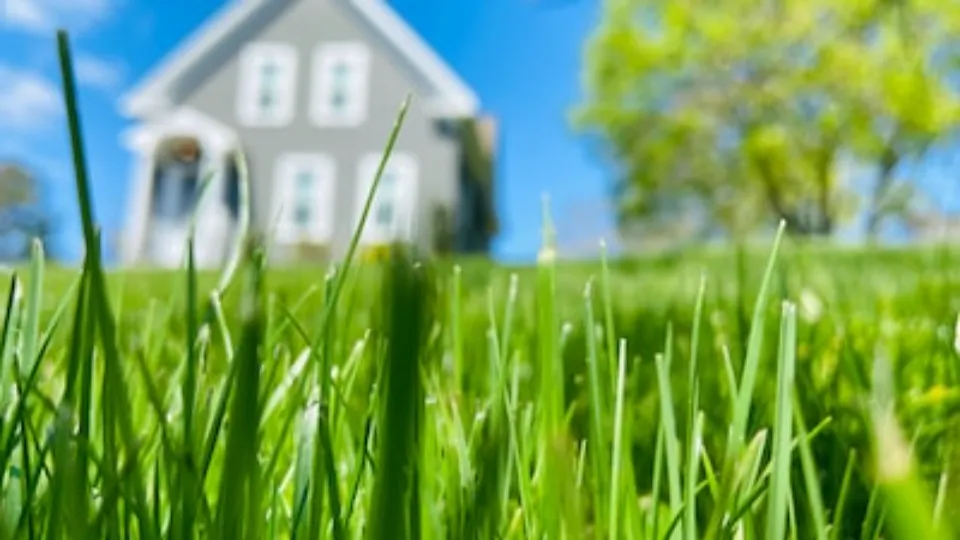
Centipede Lawn in the Fall
Sulfur is an excellent fertilizer for centipede lawns as it helps to ward off diseases. This substance is a natural antifungal and can lower the pH to approximately 5.8.
Additionally, it enhances soil health, increases access to iron, and helps keep pH levels stable. Be patient, though, as the pH won’t drop immediately.
Take a sample of the soil to determine the amount of sulfur to use. Per 1,000 square feet of soil, it is best to apply 5 pounds of sulfur. You might want to double this amount if your soil is primarily clay.
Four inches of the soil should be covered with sulfur, and it should be kept moist. Since centipede lawns take so long to establish, it’s crucial to resample the soil four to six months after the initial application.
Aeration must be put off for a few weeks if you intend to treat the soil with a pre-emergent herbicide before planting the centipede lawn.
To keep your centipede lawn happy and healthy during the fall, you should apply sulfur every three to four weeks. However, take caution to avoid applying too much sulfur, as this can cause your grass to burn.
Centipede grass is very sensitive to fertilization. Nitrogen can be harmful in excess or inadequately. Aside from that, be careful not to fertilize your centipede lawn too early or too late in the year.
Depending on the season and the kind of soil your centipede lawn is growing in, you should fertilize it at the appropriate time. You can use more nitrogen if your soil is clay, but be careful not to apply too much because it will result in excessive thatch and raise your risk of turfgrass disease.
Effects of Sulfur
One chemical that could harm your lawn is sulfur. There are two ways to apply it to the soil: foliar application of elemental sulfur. The impact of foliar application is greater than that of soil application on the lawn. The soil of the lawn may oxidize as a result of either method.
It won’t work instantly to apply sulfur to your lawn. It is crucial to apply it in small amounts in accordance with the recommendations from a soil test because it works slowly in soil.
However, you should exercise caution when applying sulfur because too much of it can damage the pH of the soil and burn grass roots. It is advised to treat iron deficiency before using sulfur to prevent this.
In the summer, sulfur treatments work best. Sulfur will aid in your lawn’s recovery from a low pH level, but it may take several months to a year.
Although during the summer when bacteria are more active, this process moves more quickly. Sulfur can be sprinkled on the lawn, but make sure the top three inches are covered. Additionally, you can test the pH of the soil on a regular basis to make sure it is not too low.
How Does Sulfur Work

The main purpose of sulfur on lawns is to lower the pH of the soil. The availability of numerous nutrients that grasses require is impacted by high pH, excessively alkaline soil. Soil bacteria transform sulfur into sulfuric acid when sulfur is added to the soil. The pH of the soil is gradually lowered by this biological reaction, increasing the availability of nutrients. Compared to the quick chemical reaction caused by other products, the process takes much longer.
- Sulfur is one of the auxiliary nutrients that supports wholesome grass growth.
- Overly alkaline, high-pH soil affects the availability of numerous nutrients that grasses require.
The Benefits of Using Sulfur
Your grass can benefit in a variety of ways from using sulfur as a lawn amendment. It will make your lawn more drought and winter-tolerant and give it a deeper shade of green.
Additionally, it will alter the pH of your soil, improving the wellbeing of your grass. However, use caution when applying sulfur because too much of it can harm your grass.
Applying sulfur in late winter or early spring will yield the best results. This will aid in halting the growth of dangerous bacteria and fungus. Additionally, sulfur helps plants avoid burning when the temperature is high. Use it early in the day while the weather is still cool.
Sulfur is simple to apply; you can either sprinkle it on the lawn or incorporate it into the soil with a soil tiller. Keep in mind, though, to adhere to the instructions on the package. To water after using the majority of sulfur products, allow 20 minutes.
Signs of Deficiency – When You Need to Apply Sulfur to Lawn
If your lawn needs sulfur, you can find out by conducting a soil test, but grasses that are deficient also show the physical consequences of low soil sulfur. Older grass blades may become discolored or yellow as symptoms. The grasses that are younger take longer to mature and lawns grow more slowly. The likelihood of problems caused by inadequate sulfur is higher for grasses planted in sandy soils.
- Sulfur promotes a lush, green color for the grass and aids in strong root growth.
- Sulfur deficiency is typically more common in lawns that don’t have enough organic material.
How to Test Soil PH

Prior to applying sulfur to your lawn, you should always test the pH of your soil. By doing this, you’ll be able to apply the correct amount of sulfur without risking burning your grass.
To see any noticeable changes in your pH level, it may be necessary to apply sulfur several times because it is a very slowly acting substance.
The soil’s acidity and alkalinity are determined by the pH of the soil. Between 6.0 and 7.0 is the ideal pH range. Your lawn will not grow well and be unhealthy if the pH is below this range.
In contrast, alkaline soil with a higher pH value will profit from sulfur treatment.
The first step in measuring the pH of your soil is to gather a sample. This can be carried out in a lab or at home. A test on a soil sample can tell you your soil’s pH level and whether you need sulfur fertilizers or dolomite lime.
Incorporating Sulfur
Sulfur can be added to your lawn to regulate the pH of the soil. Use a pH test available at your neighborhood garden center to determine the correct amount of sulfur to apply to your soil. The ideal pH range for your lawn’s soil is 6.0 to 7.0.
Additionally, the soil ought to drain well while holding some moisture. Consider adding a few pinches of sulfur to the soil if you’re unsure whether sulfur is necessary for your lawn.
Depending on the soil texture, there are different ways you can apply sulfur to your lawn. While a soil with clay consistency might need 20 pounds of sulfur, a pH of 6.5 can be attained with roughly 10 pounds of sulfur per thousand square feet.
Sulfur can, however, burn your lawn if used in excess, so keep that in mind. Five pounds of elemental sulfur can be applied to established lawns every three to four weeks during cooler months.
While the sulfur will make your lawn look better, it won’t immediately solve all of the issues. The effects of sulfur application take several years to manifest.
Sulfur should ideally be applied twice a year at the very least. The best seasons for applying sulfur are spring and fall, when the temperature is cooler. Additionally, before applying the sulfur to your lawn, be sure to check the pH level of the grass.

Application Recommendations
Consider your soil test results carefully as the quantity of sulfur required for your lawn depends on its pH level, type of soil, and other elements. For every 1,000 square feet of lawn, most lawns use 2 to 3 pounds of sulfur annually. To avoid adding sulfur yourself, choose a lawn fertilizer that already has it. After applying sulfur to lawns, be sure to thoroughly water them. This might burn grass roots. Common sources of sulfur include gypsum, which contains 18.6% sulfur, potassium sulfate, which contains 17.6% sulfur, ferrous sulfate, which contains 18.8% sulfur, and ammonium sulfate, which contains 24% sulfur.
Things to Consider for Applying Sulfur to Lawn
Make sure to perform a soil test before applying sulfur to your lawn. You can use this to determine how much sulfur is required and how much to apply. It is crucial to apply sulfur correctly because some lawns won’t respond to it.
Sulfur application will make your lawn look better, but it may take a while before you notice any changes. In the event that you choose to use sulfur, it is crucial to reapply it periodically.
The quantity of sulfur you should apply will depend on the pH of your soil. Typically, 10 to 15 pounds of sulfur should be added per 1,000 square feet of soil. Thus, the pH of the soil will decrease to 6.5. Apply 20 or 25 pounds of sulfur per 1,000 square feet, though, if your soil is clay-like.
Applying too much sulfur can burn your grass, so be careful not to do that. Applying five pounds of elemental sulfur every three to four weeks during the cooler months is a good way to treat established lawns.
The fact that sulfur does not convert until temperatures are high enough is the most crucial fact to understand. This indicates that your Fall application has likely not progressed much. Without a buffer, the pH of soils won’t change more than one point.
Conclusion – How Often to Apply Sulfur to Lawn
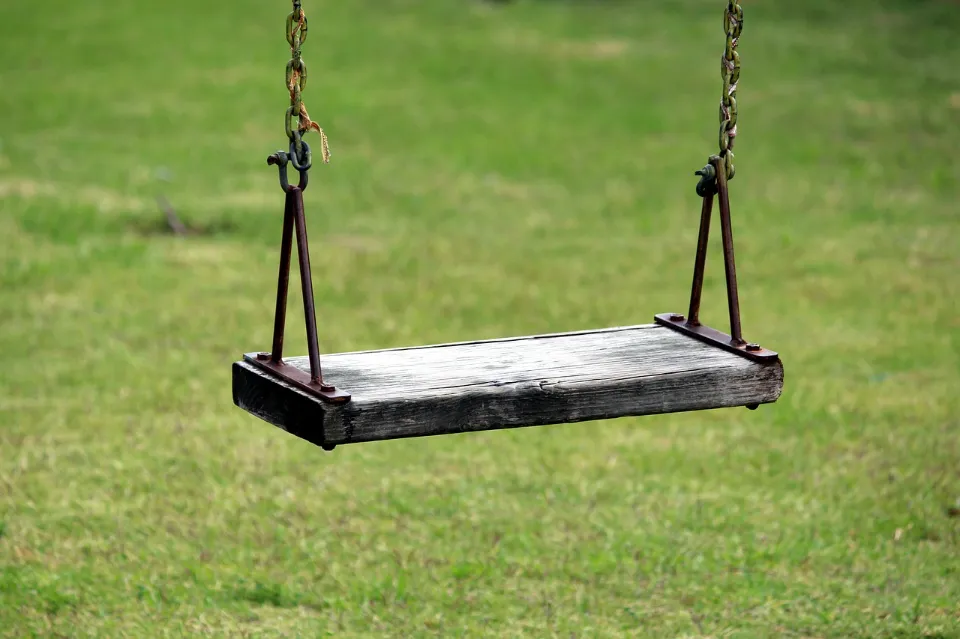
An amendment to the soil called sulfur can make your lawn look better. Its effects, though, may not manifest for a number of years. In order to prevent any long-term damage, it is best to apply sulfur to your lawn several times (every three to five weeks) over the course of several years.
It is best to conduct a soil test before applying sulfur to your lawn to determine the precise quantity of sulfur that will benefit it.
Multiple layers make up the intricate system that is soil. Sulfur concentrations are typically higher in soils that are rich in organic matter. Sulfur is stored as sulfate in the soil and must first be converted into sulfate for plants to use it.
The main sulfur source in the majority of soils is organic matter. But some sulfur is also added to the soil by sulfur fertilizers and irrigation water.
Sulfur is a crucial nutrient for plants. Crop growth is aided by it, which also helps maintain soil pH levels in balance. Ammonium sulfate is the most popular kind of sulfur fertilizer and gives turf a lot of nitrogen. Additionally, it functions as an adjuvant to herbicides, fungicides, and insecticides.

FAQs
How to Apply Sulfur to Lawn in Summer
Sulfur can be applied any time, but will only work to change the pH if the soil is warm. Spring and late summer are when I apply. A soil test should be used to gauge the appropriate amount. pH decrease depends on soil type (CEC) and climate.
What Does a Sulfur Treatment Do for Your Lawn
A sulphur treatment can help balance the pH level of your lawn, and for those who don’t know; the result of low pH levels can cause your lawn to grow slowly or took look yellow-like. The ability of nitrogen, phosphorus, and potassium to dissolve into the roots is hampered by an overly acidic or overly alkaline lawn.
Does Sulfur Kill Grass
The ability of nitrogen, phosphorus, and potassium to dissolve into the roots is hampered by an overly acidic or overly alkaline lawn. Sulphur can reduce these problems and create a lusher, more green looking lawn.
How to Put Lawn Fertilizer With Sulfur
A sulphur treatment can help balance the pH level of your lawn, and for those who don’t know; the result of low pH levels can cause your lawn to grow slowly or took look yellow-like. An overly acidic or overly alkaline lawn prevents potassium, phosphorus, and nitrogen from soaking into the roots.
How to Apply Sulphur to Soil
For this project, you should use compost that has had ample time to decompose. Sulfur is a component of organic matter, so adding compost to the soil will organically add sulfur to it. This is a smart move because it can benefit the soil and plants in other ways.
How Much Sulfur to Lower PH in Lawn
Most urban soils will require between 35 and 56 lbs sulfur/1000 sq. ft. to lower soil pH 0.5 units. Generally speaking, applying more than 20 lbs of sulfur per 1000 sq. ft.

